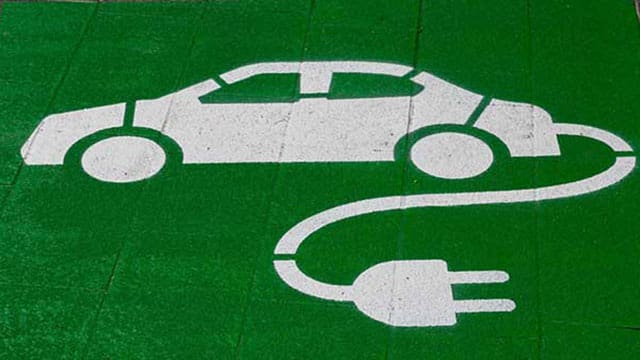A reality check on green energy and electric vehicles

The marvellous Christmas movie The Polar Express, starring the inimitable Tom Hanks, ends with the words “anything is possible, if you only believe.” Except, as adults understand, many things aren’t possible, not even if some people do believe them.
An obvious example is the fantasy that the 84 percent of global energy supplied by oil and gas can be replaced by so-called green energy.
Since the first UN COP (Conference of the Parties) meeting in 1995, world oil demand has increased from 64 to 100 million barrels per day. But even as demand increased, the environmental, social and governance (ESG) movement encouraged investors to unload their oil industry holdings.
Faced with share valuations reflecting their perceived status as a sunset industry, the rational course for oil company leaders was to pay out large dividends rather than re-invest in production growth. As demand grew, supply therefore stagnated.
The Ukraine crisis revealed just how narrow the supply margin has become. Regrettably, most of that margin is in the hands of Russian President Vladimir Putin, leaving European countries that depend on Russian oil no choice but to continue to provide the funds with which he ravages the Ukrainian people. This is the tragedy that sanctimonious ESG zealots have wrought.
Meanwhile, back in the world capital of if-you-only-believe fantasies, the prime minister of a country endowed with one of the world’s largest reserves of oil has presided over a seven-year-long anti-oil-industry scourge, thwarting multiple proposed export pipelines that could have been supplying those captive market countries.
Sharing his anti-oil zealotry seems to be a necessary qualification for Justin Trudeau’s cabinet.
Alberta Premier Jason Kenney recently went to Washington to present the Senate energy committee with plans to increase Canadian oil exports, thereby freeing up more U.S. oil to help Europe reduce Russian oil purchases. The idea received a warm reception.
Unfortunately, federal Resources Minister Jonathan Wilkinson promptly contradicted Kenney’s message, telling the same committee that shifting to renewables and hydrogen “will provide true energy and national security to Europe.” In other words, don’t count on Canada to help defund Putin’s murderous war unless it lasts five or 10 more years.
It’s incomprehensible that during a global oil and gas shortage brought on by the wanton destruction of a civilized democracy, our prime minister thinks all will be well if only Canada rids itself of fossil-fueled vehicles. Deep in delusion, he considers this a perfect time to announce a plan to have 60 percent of new cars and light-duty trucks be “zero emission” by 2030.
When you live in a perennial state of fantasy, facts don’t matter. But here are facts that do matter to Canadians forced to face the real-world impact.
High cost
The federal budget promises a $5,000-per-vehicle rebate. There are 24 million gasoline- and diesel-powered vehicles in Canada. Subsidizing replacement of just one million would cost $5 billion.
The budget also contains $900 million for new charging stations. That’s helpful in urban centres, but providing a charging station network necessary to allow e-vehicles to travel interurban highways would cost tens of billions more.
Revenue needs
The federal government’s longer-term plan is to get rid of all fossil-fueled vehicles.
Federal and provincial fuel taxes now total a stunning $22 billion every year. These revenues fund the cost of building and maintaining urban streets and highways. How long can it be before governments are forced to regain those revenues from electric vehicle charging levies?
Grid stress
The average Canadian motorist drives 15,000 km per year, and the average electric passenger vehicle uses 19 kw/h per 100 km. That works out to 2,850 kw/h per year, more than 25 percent of current Canadian household consumption.
Many of the country’s electrical generation and distribution grids are already near capacity. Electric vehicle advocates say the problem will be mitigated by mandating low amperage during off-peak, late-night hours.
But most highway drivers travel during the day when the grid is near capacity. And they will need high-amperage DC quick-chargers during these already supply-tight hours.
Land demand
Refuelling with gasoline or diesel takes around five minutes. But even rapid chargers need 30 minutes. That means six times more land occupied by charging stations.
How much of that land will be taken from agricultural production?
More emissions, not fewer
Canada’s 24 million fossil-fuelled cars and pickup trucks emit 14 percent of the country’s 1.5 percent share of global emissions. If all 24 million were converted to battery power, global emissions would be reduced by just two-10ths of one percent. Emissions growth from China’s coal-fired power plants would offset that in just a few days.
And that two-10ths of a percent doesn’t count emissions produced from mining and transporting the materials that go into all those batteries. Nor does it consider that 20 percent of Canada’s electricity is generated with fossil fuels.
Those factors clearly wipe out any benefit, unless we include the benefit that living a fantasy allows people, our leader included, not to have to think about all those Ukrainians we could have saved by helping Europe say “No” to Russia’s oil – if only our oil industry hadn’t been hamstrung.
Gwyn Morgan is a retired business leader who has been a director of five global corporations.
Gwyn is a Troy Media contributor. For interview requests, click here.
The opinions expressed by our columnists and contributors are theirs alone and do not inherently or expressly reflect the views of our publication.
© Troy Media
Troy Media is an editorial content provider to media outlets and its own hosted community news outlets across Canada.



